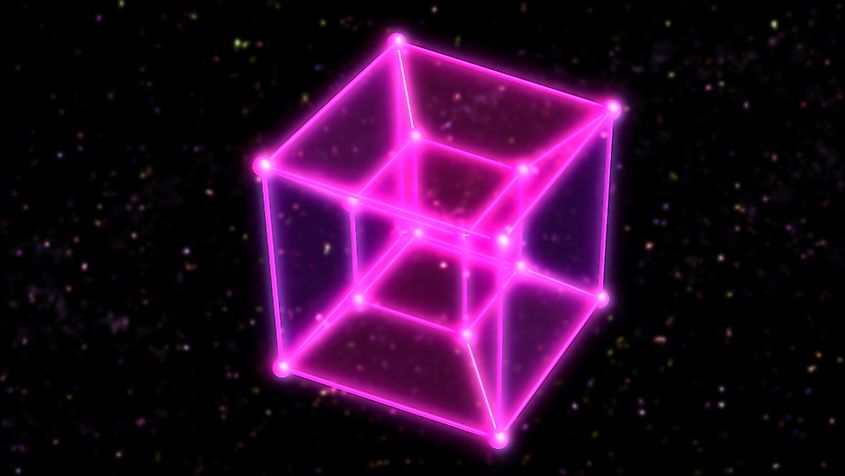Does The 4th Dimension Actually Exist?

- The tesseract is a cube perpendicular to a cube.
- Gravity is a bend in a 4-dimensional space, where space-time is inseparable.
- The Lorentz force causes the Hall Effect, and it makes the electrons in electric currents split ways when they are interrupted by a magnetic field.
Length, width, and height are the three variables we can measure, and they can express and explain the world around us. Rules that follow a 3D role model, or living in a three-dimensional world is something you do not even think about. But, what if there is more to it? Can we even perceive the 4th dimension?
Einstein And Space-Time
First of all, we can talk about two crucial moments that brought up the questions of the 4th dimension. Einstein, way back in 1905, added another dimension besides length, width, and height. You guessed it - it is time. In his theory of special relativity, time is another dimension added to the observable (and measurable) world, so technically, the name of Einstein’s addition to the list of dimensions would be: space-time.
The implications of these observations were huge for the world of science and beyond. Not only did it show how we can view time and space as inseparable, but it opened ways into explaining event horizons and black holes, and changed the way we can think about gravity. Gravity is, if we take the 4th dimension space-time into account, ‘’just’’ a bend in that dimension.
The Tesseract
No, we are not talking about the most sought of an item in the Marvel Universe. Still, it is such a hard concept to grasp, and nobody should take the blame for having a hard time imagining it.
A tesseract is an object that approaches the idea of a cube, but it places it in a 4D system. The most straightforward way to explain it would be: imagine something perpendicular to a cube. But, this object does not exist in the real world, or at least the one we can perceive. So, an experiment was conducted.

Scientists viewed how electrons behave in a very specific situation. If electricity passes through a conductive material, like a wire, the electrons move in just one direction, following the electric current. However, if you put a strong enough magnet perpendicular to the wire, then those electrons split in two ways, left and right. This is known as the Hall Effect, and what is causing it is a phenomenon called the Lorentz force.
This is not the first time that scientists find explanations for something so significant in something so small. The Hall effect and the divergence of electrons happens on a quantum level. Still, it is a foundation for explaining the 4th dimension. Working in such a limited and technically 2D environment, the Hall Effect provides a way to find out more about the 4th dimension, which is intrinsic to a lower-dimensional system like that.
The current problem with the 4th dimension is that it speaks more about the limits of our cognitive mind, then it does about itself. Humans, although living in a 4-dimensional space-time gravity bending universe, are still unable to comprehend objects like perpendicular cubes, and curves in space-time. Plus, there is also string theory which takes, wait for it...10 dimensions into account!







